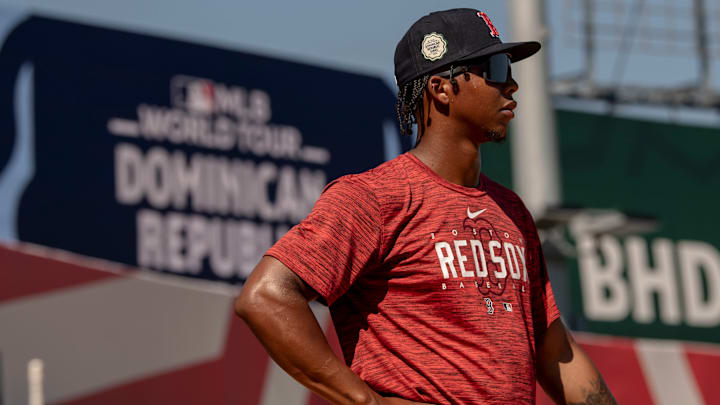The 1966 Boston Red Sox (72-90) were just part of a disappointing trend that has continued since Ted Williams' retirement. The bleakest of times did have bright spots that would soon sparkle — the team was loaded with young talent on the cusp of a group breakout.
The centerpiece in 1966 was Carl Yastrzemski, who had already flashed his batting talent at just 26 years old. The roster was sprinkled with young talent — Tony Conigliaro (21), George Scott (22), Joe Foy (23), Dalton Jones (22), Reggie Smith (21), Tony Horton (21), Mike Ryan (25), and Mike Andrews (22), who soon made their mark in 1967.
The more things change, the more they stay the same. The 1966 Sox boasted a slew of fielding talent, but where was the pitching? The Red Sox had one arm of promise in righty Jim Lonborg, who pitched to a 10-10 record and 3.86 ERA.
In 2023, the Red Sox finished last in a loaded American League East, and the pitching was, to be kind, questionable. However, within that staff was Brayan Bello (12-11, 4.24), whom the Red Sox recently extended with a six-year deal.
In 1967, Lonborg won a Cy Young Award and led a cobbled staff, much like what is anticipated for 2024. Bello could accomplish the same feat in 2024 as Lonborg in did 1967, but the rest of the roster still has significant growing pains. The flow of younger players has commenced, but the success rate is yet to be determined.
The apparent direction is a full-fledged youth movement based on the front office's reluctance to spend in free agency and an unwillingness to trade prospects. Roman Anthony hopefully represents a rising star ready in the near future. The recent groin injury to Boston's new, young second baseman, Vaughn Grissom, demonstrates how suddenly things can change. Just think Conigliaro's beaning or Lonborg taking up skiing.
Brayan Bello has the arm and the talent to lead the Red Sox rotation
Brayan Bello wants to be in the Hall of Fame one day.
— Tyler Milliken ⚾️ (@tylermilliken_) March 9, 2024
Also mentions winning 20 games and bringing home a Cy Young. pic.twitter.com/drobmc8M5P
It seems the Red Sox target for much of its young talent is 2025, and Bello could anchor a pitching staff that will only be elite if pixie dust falls. The Red Sox will also have to duplicate the talented roster of youth of 1967, which is a work in progress.
In 1967, Lonborg pitched angrily and was a noted head hunter thanks to new pitching coach Sal Maglie, known as "The Barber," in his pitching days for giving batters close shaves. Times have changed, and dusting the tower is frowned upon, but pitching tight is not. Bello is often compared to Pedro Martínez, and he had no qualms about fighting for his share of the plate.
The Red Sox have a new pitching coach, Andrew Bailey, and Bello will likely be his prime target. Bailey will refine Bello's approach, which is consistency from start to start.
Statistics suggest Bello could pitch to a very comfortable 2.6 BB/9 and an uncomfortable 9.5 H/9. Bello certainly has the velocity (95.6v), the best GB% (56.2) among qualified pitchers in the AL, and an excellent three-pitch selection. Bailey's first order of business is to refine an underutilized curve for Bello, which would be a magnificent option after a few heaters.
Bello is the future star of the rotation, and his development is not guaranteed, but the Red Sox signing him long-term speaks to how management views his potential. Now we have to see it.
In the 1960s, the Red Sox farm system suffered its share of pitching disappointments, which is something the current system has in common. Dave Morehead, Jerry Stephenson, and Pete Charlton are among the many from the 1960s who will join Brian Johnson, Henry Owens, and Trey Ball. Tread lightly on prospect huzzahs.
Red Sox Nation could expect the 2024 club to match the 1966 team with 90 losses, and to see manager Alex Cora start to enter the lineup of the future on his card. Triston Casas and Grissom are given, and Ceddanne Rafaela may force a trade to get his shot. Catcher Kyle Teel is on the fast track, and Anthony may be part of the 2025 lineup. Marcelo Mayer has to prove his talent is real. Wilyer Abreu may be Chaim Bloom's best trade.
The excitement for the next few seasons is going to come from getting the kids in the lineup.
